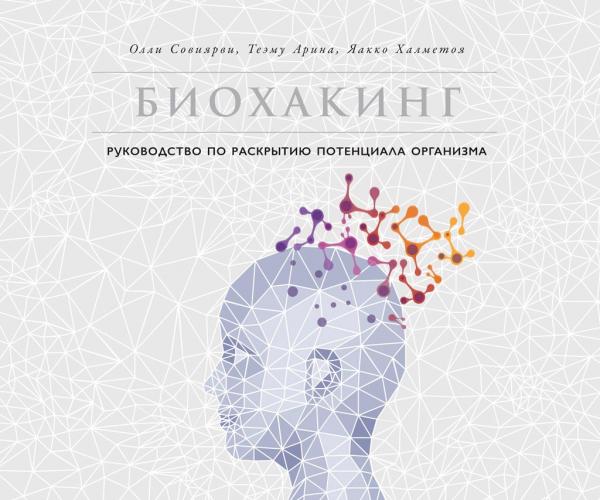107
National Institutes of Health. (2012). Human Microbiome Project defines normal bacterial makeup of the body. Bethesda: National Human Genome Research Institute. [date of reference: 26.8.2014]
108
Ley, R. & Peterson, D. & Gordon, J. (2006). Ecological and evolutionary forces shaping microbial diversity in the human intestine. Cell 124 (4): 837–848. Review.
109
Guarner, F. & Malagelada, J. (2003). Gut flora in health and disease. The Lancet 361 (9356): 512–519. Review.
110
Sonomoto, K. & Yokota, A. (2011). Lactic Acid Bacteria and Bifidobacteria. Current Progress in Advanced Research. Norfolk: Caister Academic Press.
111
Wong, J. & de Souza, R. & Kendall, C. & Emam, A. & Jenkins, D. (2006). Colonic health: fermentation and short chain fatty acids. Journal of Clinical Gastroenterology 40 (3): 235–243. Review.
112
Guarner, F. & Malagelada, J. (2003). Gut flora in health and disease. The Lancet 361 (9356): 512–519. Review.
113
Jernberg, C. & Löfmark, S. & Edlund, C. & Jansson, J. (2010). Long-term impacts of antibiotic exposure on the human intestinal microbiota. Microbiology 156 (Pt 11): 3216–3223.
114
Beaugerie, L. & Petit, J. (2004). Microbial-gut interactions in health and disease. Antibiotic-associated diarrhoea. Best Practice and Research Clinical Gastroenterology 18 (2): 337–352. Review.
115
Thomas, C. & Stevenson, M. & Williamson, D. & Riley, T. (2002). Clostridium difficile-associated diarrhea: epidemiological data from Western Australia associated with a modified antibiotic policy. Clinical Infectious Diseases 35 (12): 1457–1462.
116
Dethlefsen, L. & Huse, S. & Sogin, M. & Relman, D. (2008). The pervasive effects of an antibiotic on the human gut microbiota, as revealed by deep 16S rRNA sequencing. PLoS Biology 6 (11): e280.
117
World Health Organization. (2014). WHO’s first global report on antibiotic resistance reveals serious, worldwide threat to public health. Geneva: WHO. [date of reference: 26.8.2014]
118
Forsythe, P. & Kunze, W. (2013). Voices from within: gut microbes and the CNS. Cellular and Molecular Life Sciences 70 (1): 55–69. Review.
119
Cryan, J. & Dinan, T. (2012). Mind-altering microorganisms: the impact of the gut microbiota on brain and behaviour. Nature Reviews Neuroscience 13 (10): 701–712. Review.
120
Cryan, J & O’Mahony, S. (2011). The microbiome-gut-brain axis: from bowel to behavior. Neurogastroenterology and Motility 23 (3): 187–192.
121
Grenham, S. & Clarke, G. & Cryan, J. & Dinan, T. (2011). Brain-gut-microbe communication in health and disease. Frontiers in Physiology 2: 94.
122
Foster, J. & McVey Neufeld, K. (2013). Gut-brain axis: how the microbiome influences anxiety and depression. Trends in Neurosciences 36 (5): 305–312. Review.
123
Roberts, R. & Farmer, C. & Walker, C. (2018). The human brain microbiome; there are bacteria in our brains!. Program No. 594.08. Neuroscience Meeting Planner. San Diego, CA: Society for Neuroscience, 2018. Online.
124
Mayer, E. (2011). Gut feelings: the emerging biology of gut-brain communication. Nature Revies Neuroscience 12 (8): 453–466. Review.
125
Welgan, P. & Meshkinpour, H. & Beeler, M. (1988). Effect of anger on colon motor and myoelectric activity in irritable bowel syndrome. Gastroenterology 94 (5 Pt 1): 1150–1156.
126
Travagli, R. & Hermann, G. & Browning, K. & Rogers, R. (2006). Brainstem circuits regulating gastric function. Annual Review of Physiology 68: 279–305. Review.
127
Mayer, E. (2000). The neurobiology of stress and gastrointestinal disease. Gut 47: 861–869.
128
Hughes, D. & Sperandio, V. (2008). Inter-kingdom signalling: communication between bacteria and their hosts. Nature Reviews Microbiology 6: 111–120.
129
Fasano, A. (2012). Leaky gut and autoimmune diseases. Clinical Reviews in Allergy and Immunology 42 (1): 71–78.
130
Hollander, D. (1999). Intestinal permeability, leaky gut, and intestinal disorders. Current Gastroenterology Reports 1 (5): 410–416. Review.
131
Hietbrink, F. (2009). Systemic inflammation increases intestinal permeability during experimental human endotoxemia. Shock 32 (4): 374–378.
132
Frazier, T. & DiBaise, J. & McClain, C. (2011). Gut microbiota, intestinal permeability, obesity-induced inflammation, and liver injury. Journal of Parentereral and Enteral Nutrition 35 (5 Suppl): 14S–20S.
133
Neurath, M. (2014). Cytokines in inflammatory bowel disease. Nature Reviews Immunology 14: 329–342.
134
Aloisi, F. (2001) Immune function of microglia. Glia 36 (2): 165–179. Review.
135
Foster, J. & McVey Neufeld, K. (2013). Gut-brain axis: how the microbiome influences anxiety and depression. Trends in Neuroscience 36 (5): 305–312. Review.
136
Love, B. et al. (2013). Antibiotic exposure and risk of food allergy in children. 2013 Annual Meeting of the American Academy of Allergy, Asthma and Immunology. [date of reference: 20.9.2014]
137
Vadas, P. & Wai, Y. & Burks, W. & Perelman, B. (2001). Detection of peanut allergens in breast milk of lactating women. The Journal of the Ameican Medical Association 285 (13): 1746–1748.
138
Kosecka, U. & Berin, M. & Perdue, M. (1999). Pertussis adjuvant prolongs intestinal hypersensitivity. International Archives of Allergy and Immunology 119 (3): 205–211.
139
Nakayama,
